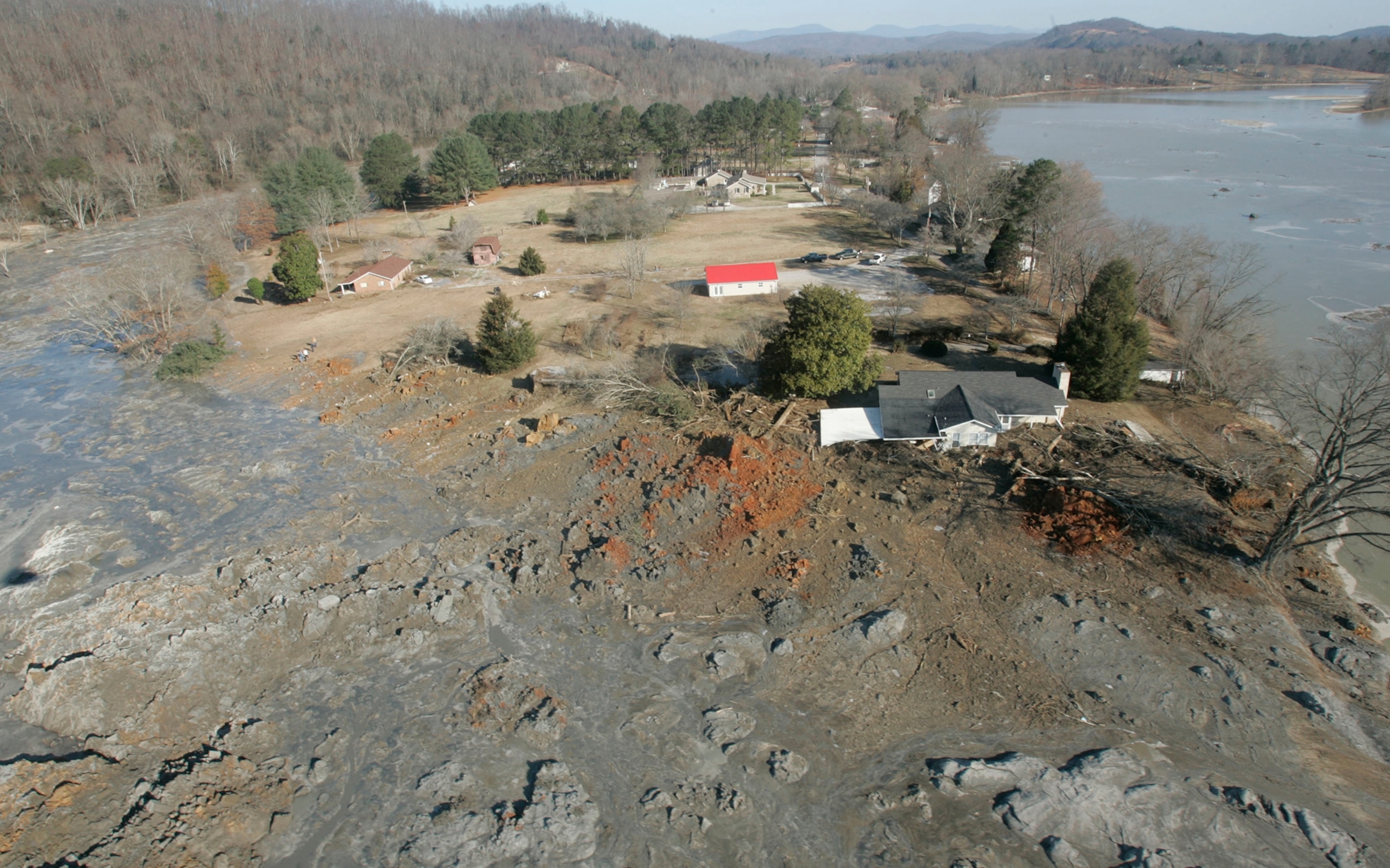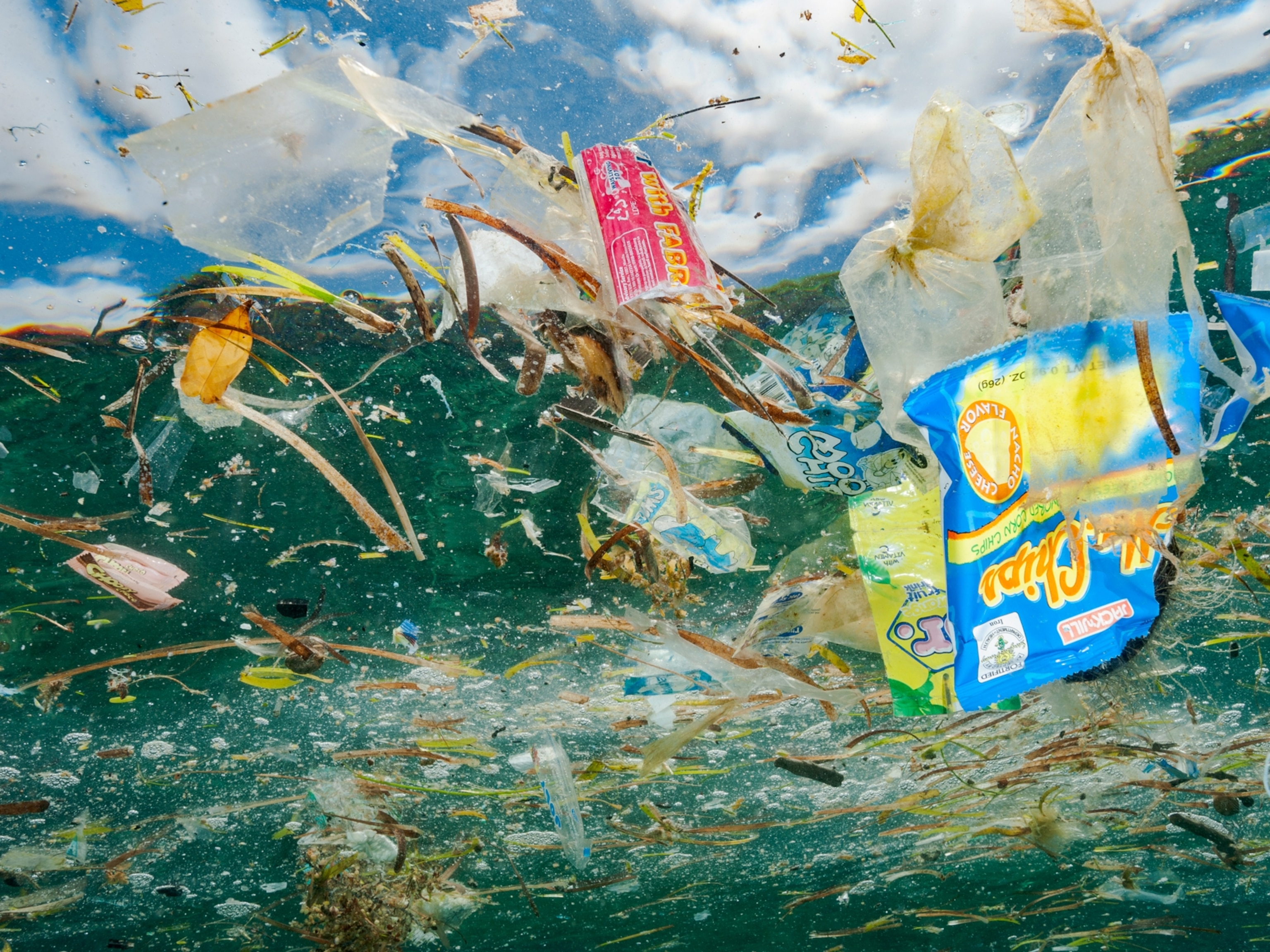
EPA Decides That Coal Ash, Which Pervades Our Homes, Is Non-Hazardous
The new labeling of the substance could affect how much it's recycled.
From roof shingles to drywall to concrete countertops, products made with leftover waste from coal-fired power plants are in many U.S. homes.
About 45 percent of this dustlike material—known as coal ash—is recycled into products as elemental as pavement and foundations. Such reuse, up from 30 percent in 2000, is generally considered safe and welcomed by most everyone, from utilities seeking to lower disposal costs to environmentalists looking to lower carbon emissions.
But that's only half the story.
The other 55 percent of coal ash, which can contain toxic substances like arsenic, is often stored in ponds next to waterways. In December 2008, more than a billion gallons leaked into the Emory River and nearby land from the Kingston Fossil Plant in Tennessee. And in February of this year, up to 39,000 tons spilled into the Dan River from a Duke Energy coal plant in North Carolina. (See related story: "Giant Toxic Coal Ash Spill Threatens Animals.")
So on Friday, facing a court-ordered deadline, the Environmental Protection Agency (EPA) made a long-awaited decision: Coal ash needs to be safely disposed of but is not a hazardous waste. (See related story: "Largest U.S. Coal Ash Pond to Close, But Future Rules Still Undecided.")
To the dismay of environmentalists, the EPA's determination keeps coal ash in the same category as household garbage. Still, the agency called for regular safety inspections, the closure of landfills that fail to meet standards, groundwater monitoring, and dust controls around coal-ash sites.
A Boon for Recycling?
The coal industry, which lobbied heavily against a "hazardous" label that could have required costly disposal rules, says the EPA decision could spur an uptick in coal-ash recycling.
"There's a lot of market demand for this material," says Thomas H. Adams, executive director of the American Coal Ash Association, noting interest from green-building groups and others that favor reuse.
He says a common type of coal ash, called fly ash, makes concrete more durable and—by reducing the need to manufacture cement—also lowers greenhouse-gas emissions. Adams adds that another type of coal ash, synthetic gypsum, is used in about 50 percent of U.S. drywall, while a third type, boiler slag, appears in about 80 percent of roof shingles.
Adams says labeling coal ash "hazardous" would have created a "stigma" and scared recyclers away. In a report this month, his group said coal-ash recycling rates, after rising markedly from 2000 to 2008, largely stalled in 2009, when the EPA began considering regulations.
The Flip Side
Environmentalists are critical of the EPA's decision.
While its protections offer a "modest" first step, "they do not go far enough to protect families from this toxic pollution," says Mary Anne Hitt, director of the Sierra Club's Beyond Coal Campaign.
Scott Slesinger, legislative director of the Natural Resources Defense Council, says he expects more hazardous leaks will occur. He also expects a drop in coal-ash recycling.
Slesinger says that if the industry had to spend more money to safely dispose of coal ash, then the incentives for cheaper alternatives, such as recycling, would increase. While coal ash is potentially toxic, it can be safely reused in products as long as it's encapsulated—meaning that it's bound at the molecular level into an insoluble compound.
Even if coal ash used in construction materials is demolished, says Slesinger, it won't leach toxins, because it's not broken down below the molecular level. That, he says, is why the EPA determined earlier this year that the use of fly ash in concrete and drywall is as safe as the raw materials it replaces.
Clearly, the Obama administration—which in the past year proposed rules requiring coal power plants to meet a tougher ozone standard and reduce carbon-dioxide emissions—didn't want to pick another fight with the coal industry over the EPA's coal-ash decision. (See related story: "New U.S. Ozone Rules Likely to Be Felt Nationwide.")
Besides, incoming Senate Majority Leader Mitch McConnell, a Republican from Kentucky, has promised to fight any rule that could hurt coal interests. In each of the past two Congresses, the GOP-led House has passed legislation to oppose federal coal-ash rules, giving leadership instead to the states.
On Twitter: Follow Wendy Koch and get more environment and energy coverage at NatGeoGreen.
The story is part of a special series that explores energy issues. For more, visit The Great Energy Challenge.





